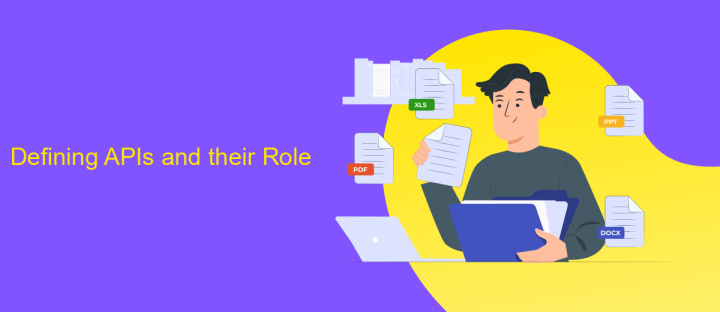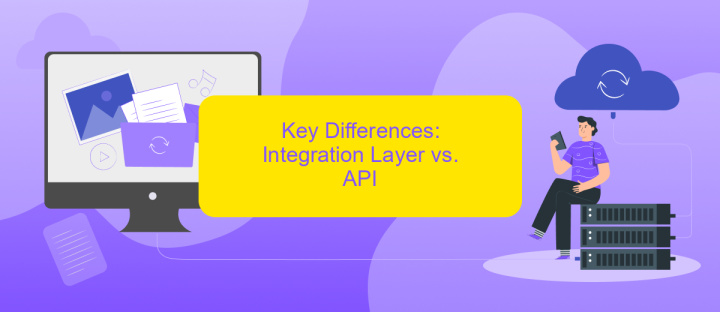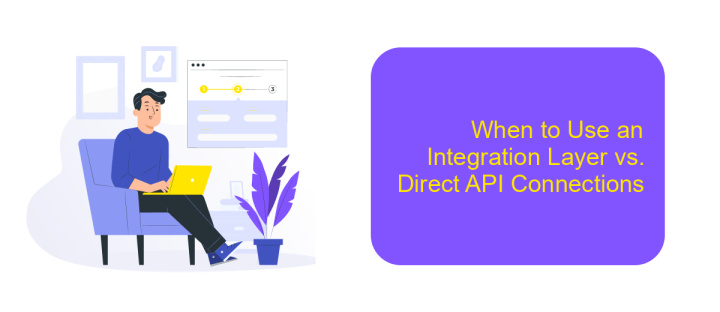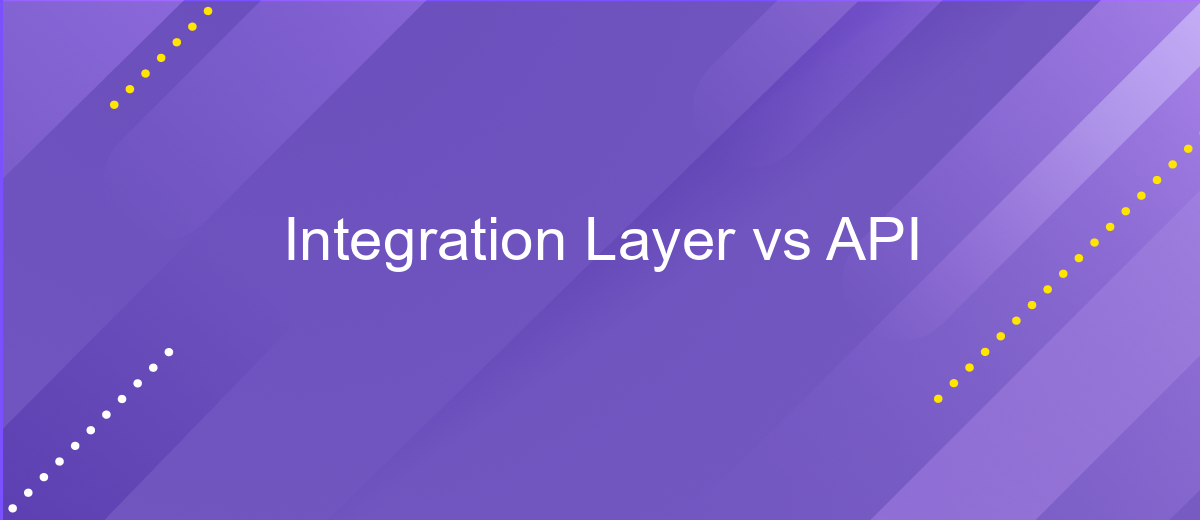Integration Layer vs API
In the rapidly evolving landscape of digital transformation, businesses are seeking efficient ways to connect diverse systems and applications. Two pivotal technologies in this realm are the Integration Layer and APIs. While both aim to facilitate seamless communication between disparate systems, they serve distinct roles and offer unique benefits. This article explores the differences between Integration Layers and APIs, helping organizations make informed decisions for their integration strategies.
Understanding the Integration Layer
The integration layer serves as a crucial component in modern IT architectures, acting as a bridge that connects disparate systems and applications. It ensures seamless data exchange and process coordination across different platforms, enabling organizations to streamline operations and improve efficiency. By decoupling systems, the integration layer provides flexibility and scalability, allowing businesses to adapt to changing needs without disrupting existing workflows.
- Facilitates communication between diverse systems.
- Enables data transformation and mapping for compatibility.
- Supports real-time data processing and synchronization.
- Enhances security by managing access and authentication.
- Improves scalability by decoupling system dependencies.
Understanding the integration layer's role is essential for implementing robust IT solutions that can evolve with technological advancements. By leveraging middleware technologies and integration platforms, organizations can achieve a more cohesive IT environment. This not only enhances operational efficiency but also provides a foundation for innovation and growth. As businesses continue to adopt digital transformation strategies, the integration layer will remain a pivotal element in ensuring seamless connectivity and interoperability across various IT ecosystems.
Defining APIs and their Role

APIs, or Application Programming Interfaces, are vital components in modern software development, acting as intermediaries that allow different software systems to communicate with each other. They define a set of rules and protocols for building and interacting with software applications, enabling developers to access the functionality of other applications without needing to understand their internal workings. APIs facilitate seamless integration between disparate systems, making it possible to leverage external services, enhance functionality, and streamline processes across various platforms.
The role of APIs extends beyond simple data exchange; they are crucial for enabling automation, enhancing user experiences, and driving innovation. By providing a standardized way to connect systems, APIs allow businesses to create more efficient workflows and unlock new opportunities for growth. Services like ApiX-Drive simplify the integration process by offering a user-friendly platform to connect different applications without extensive coding knowledge. This empowers organizations to focus on their core operations while seamlessly integrating the tools and services they need. Overall, APIs play a pivotal role in the digital ecosystem, fostering collaboration and enabling the development of robust, interconnected solutions.
Key Differences: Integration Layer vs. API

Understanding the key differences between an integration layer and an API is crucial for optimizing your technology stack. Both play vital roles in software architecture but serve distinct purposes and functions. While an integration layer acts as a middleware that connects and facilitates communication between different systems, APIs are specific interfaces that allow applications to interact with each other directly.
- Functionality: An integration layer provides a comprehensive framework for managing data flow, whereas an API offers a set of protocols for accessing specific functionalities.
- Complexity: Integration layers handle complex data transformations and orchestration, while APIs are typically simpler, focusing on direct requests and responses.
- Flexibility: Integration layers offer more flexibility in connecting disparate systems, whereas APIs are more rigid, designed for specific interactions.
- Scalability: APIs are generally easier to scale due to their focused nature, while integration layers require more effort to scale because of their comprehensive functionalities.
In summary, choosing between an integration layer and an API depends on your specific needs. If you need a robust solution for complex data management across multiple systems, an integration layer is ideal. Conversely, if you require a straightforward method for enabling direct communication between applications, an API is more suitable.
When to Use an Integration Layer vs. Direct API Connections

Choosing between an integration layer and direct API connections depends on several factors, including the complexity of your system architecture and specific business needs. An integration layer acts as a mediator, offering a centralized platform to manage and orchestrate data flow between different APIs. This approach is beneficial when dealing with multiple services, ensuring scalability and reducing the complexity of managing numerous direct connections.
On the other hand, direct API connections are more suitable for simpler systems with fewer services. They offer a straightforward approach, allowing for real-time data exchange and often result in reduced latency. Direct connections can be advantageous when you require quick, one-to-one communication without the overhead of an additional layer.
- Use an integration layer for complex systems with numerous APIs.
- Opt for direct API connections when simplicity and speed are priorities.
- Consider future scalability and maintenance overhead.
- Evaluate security requirements and data sensitivity.
Ultimately, the decision should align with your organization's architectural strategy and long-term goals. Consider both current requirements and potential future expansions to ensure a solution that remains effective and efficient over time.
Benefits and Drawbacks of Each Approach
Integration layers and APIs each offer unique benefits for connecting disparate systems. Integration layers provide a unified platform that can handle complex data transformations and orchestration, making them ideal for enterprises with intricate workflows. They can efficiently manage multiple data sources and formats, ensuring seamless interaction between systems. However, integration layers can be resource-intensive to implement and maintain, often requiring specialized skills and significant time investment. On the other hand, APIs offer flexibility and ease of use, allowing developers to quickly connect applications with minimal overhead. They excel in environments where speed and agility are crucial, enabling rapid deployment and iteration.
Despite their advantages, each approach has its drawbacks. Integration layers may become bottlenecks if not properly managed, potentially slowing down processes. APIs, while easy to deploy, can lead to fragmented architectures if not standardized, complicating maintenance. Tools like ApiX-Drive can mitigate these challenges by offering a user-friendly interface for setting up integrations, reducing the complexity associated with both approaches. Ultimately, the choice between integration layers and APIs depends on the specific needs and resources of the organization, with each providing distinct pathways to achieving seamless connectivity.
FAQ
What is the main difference between an Integration Layer and an API?
How do Integration Layers and APIs work together?
Can I use an Integration Layer without APIs?
What are the benefits of using an Integration Layer for automation?
Is it necessary to have technical expertise to set up an Integration Layer?
Time is the most valuable resource for business today. Almost half of it is wasted on routine tasks. Your employees are constantly forced to perform monotonous tasks that are difficult to classify as important and specialized. You can leave everything as it is by hiring additional employees, or you can automate most of the business processes using the ApiX-Drive online connector to get rid of unnecessary time and money expenses once and for all. The choice is yours!

